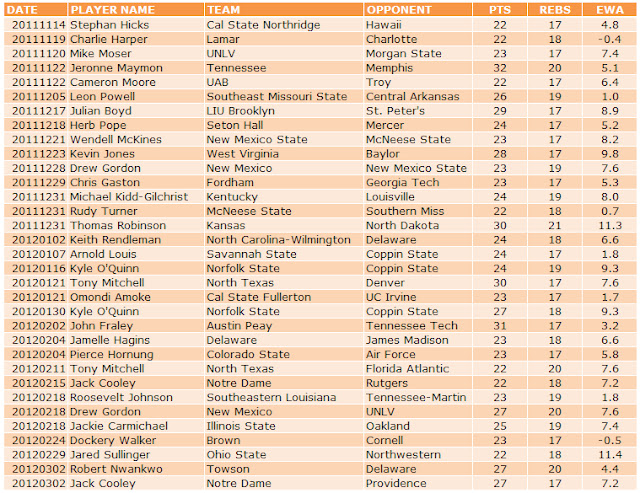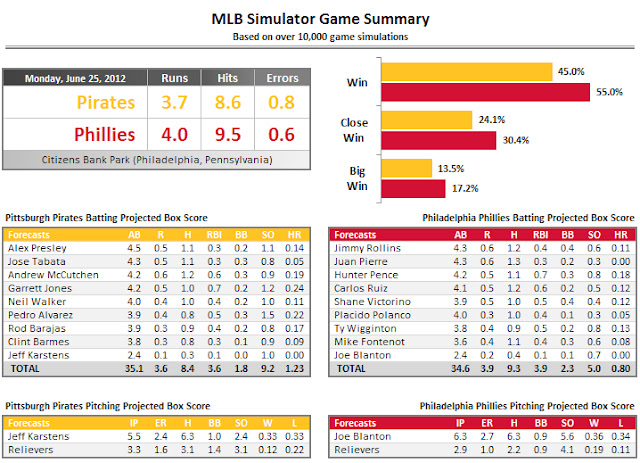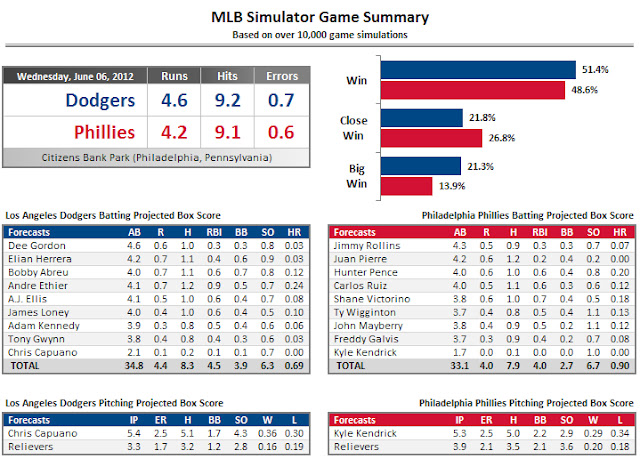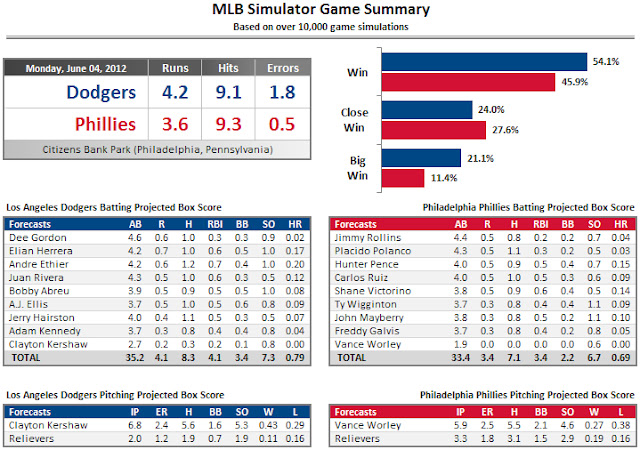The table below gives the Run Expectancy values for some of the most common events by the 24 base/out states. It was calculated using 2009-2011 play-by-play data using only the first 8 innings (to prevent the sample from including innings that weren't completed).
Some oddities I noticed that are possibly/definitely sample driven and/or evidence of the diminished run environment of the last few years (hat tip to the invaluable Tom Tango for a comparison table):
- the spread increase in value between a non-intentional walk and a hit-by-pitch. In the past a hbp was worth about 0.05 runs more than a walk, over 2009-2011 it doubled to 0.10 more
- the spread decrease between a stolen base and a caught stealing. In the past the break even point for stolen bases was thought to be around 70-75%. Based on these numbers it is only around 62% on average.
























.png)









